Genre: Action Developer: Core Design Publisher: Eidos Interactive Players: 1 Released: 1997
Being that Swagman is one of the Saturn’s more obscure games, it makes sense to start this piece with an overview. Swagman is an action/adventure that’s played from a top-down perspective, complete with light platform and puzzle elements. You control Zack and his twin sister Hannah as they progress through increasingly surreal environments, utilizing character-specific items and sometimes working cooperatively. Grueling bosses stand in your way, including the titular Swagman. To reach them, you’ll need to traverse through your house, dark tunnels, the swamp and Main Street, all of which have been transformed into the stuff of nightmares.
Released a year after Tomb Raider and made by the same British developer behind that game, Swagman was originally planned for the 32X and Atari Jaguar CD. Support for these notorious console add-ons may raise eyebrows today, but it does make sense. A 32X version definitely would have lived up to Swagman’s colourful 2D graphics and gameplay, while the Jaguar CD would have been able to deliver full-motion video (FMV) and CD audio, both of which made it into the Saturn and PlayStation versions that ultimately made it to market. It’s worth noting now that only Europe received Swagman for Saturn, with North Americans being forced to opt for the PlayStation version. Japan never received it on either system.
The first ten minutes of Swagman are a good indication of how important the FMVs, and especially the CD audio, will become for setting the game’s unique mood. The opening FMV is admittedly rather dated, with stiff animation and vague storytelling, relying on the player having read the manual to glean much of its context. The gist of it is that the sinister Swagman and his evil minions visit the town of Paradise Falls, where he traps its inhabitants in a never-ending, nightmare-fueled sleep. The twelve ‘Dreamflight’ fairies that might be able to fix all this have been trapped in bell jars, and only Zack and Hannah can free them.
The game starts in the children’s bedroom. Poor Hannah has been locked in a birdcage by the Swagman’s lackeys, so Zack takes point, and your first objective is to get her out of there. In these first few rooms, players are presented with a domestic setting that’s appropriately uncanny. Your parents snore perpetually in their bed, animated pool cues try to kill you in the rec room, and there’s a very large bottomless pit on the landing. Exploration is the name of the game here, as it is for much of Swagman’s roughly five-hour game length. You’ll collect keys to open locked doors, cherry bombs to blow open secret passages, and bugs that plot a safe route across the “Limbo” levels, which is where you’ll free one of the fairies and be transported to the next boss encounter.
As you go from upstairs to downstairs, into the garden and under the garage, you’ll need to leap over bottomless pits or hold the right shoulder button to walk carefully around them. These mechanics eventually blossom into simplistic but satisfying platform segments, occasionally marred by the top-down perspective that can make it hard to judge where you’ll land. Action takes the form of evading or attacking the Swagman’s minions, who range from bone-throwing gremlins to trailblazing fire slugs. Your starting weapon is a flashlight, which only provides short-range protection against some (but certainly not all) of these enemies. Later, Hannah will receive a yo-yo, and Zack gets the Frisbee, both of which provide longer-range defense, as long as you’re accurate. Everything works, but there’s rarely a need to select the best tool for the job, or to master your maneuvers against a specific enemy type.
One of Swagman’s greatest triumphs is evident from the very beginning, and that’s its soundtrack. Composed by Nathan McCree, these tracks synthesize a variety of instruments to convey a variety of moods, from the accordion-like mischief of the menu theme and final level to the beautifully haunting piano of “Zack’s House” and “The Dark Tunnels,” to the epic choir-and-organ crescendo of the boss music. Except for some extremely minor voice samples, Swagman has no voiceovers and only a little ambience, so it falls to the music to do the heavy lifting. In this regard, it knocks it out of the park. This is a confident and fitting soundscape that’s unlike anything else out there, then or now.
During their journey, Zack and Hannah will sometimes step through mirrors that take them to the “Terrortries.” This is the Swagman’s own twisted dream world, and while its desert- and cave-like environments certainly mark a shift from the bathrooms and back gardens of the “real world,” they’re also somehow less imaginative. Here, Zack and Hannah are transformed into nightmare creatures themselves, each with a different set of abilities that usually means only one of the twins will be able to make it through. The Terrortries aren’t among the game’s most engaging sections, and once again, you’ll never be asked to master or even use all the children’s new abilities, which contributes to the sense that these levels aren’t fully baked. Still, they do show a commitment by the developers to continually mix things up.
Clearly, there are a lot of systems at play here. The million-dollar question is “How easy it is to get absorbed in Swagman’s flow?” Does it even have one? Or are all these mechanics too disparate to play nicely? The truth is that this game does succeed in blending its many gameplay elements together, propelling the player forward in a way that feels surprisingly modern. Like Tomb Raider before it, each level is often a navigational puzzle, with its own logic that’s usually possible to decipher. Being familiar with Zack and Hannah’s unique items and cooperative abilities helps. Spotting objects that can be pushed or pulled will also reward you; however, this never becomes a pure puzzle game, and there are times when treating it like one might actually put you on the wrong path.
An early example of this is the situation with Hannah. Remember how the game starts with her locked in a cage? Because Swagman uses keys and locks, and because there are so many keys in the opening levels (and throughout the rest of the game), players would be forgiven for thinking that one of these keys would release Hannah from her cage. As it happens, the solution to this “puzzle” is to simply press on with the game as Zack, defeat a boss, grab a special item and use it to transport Hannah to an entirely new location, no keys required. When the answer to a problem seems to be staring you in the face, but the actual solution is impossible to anticipate, it undermines the game’s brainteaser ambitions.
Swagman’s second home run, after its music, is the boss battles. There are four of them, three of which take place in the first half of the game, the fourth being your showdown with the Swagman himself. These guys are tough, and they’ll force you to push the game’s movement and control scheme to its limit. It’s not as precise as it sometimes needs to be, especially when aiming your weapon of choice. Still, enemy attacks are fairly telegraphed, and the evasive techniques they require are satisfying to pull off. These battles aren’t revolutionary, but their elevated difficulty makes it hard not to feel accomplished when it’s all over.
The Saturn version differs from the PlayStation version in a few ways, some of which might bother you more than others. From the moment you take control of Zack, an unimpressive mesh shadow follows him around, compared to the transparent shadow on Sony’s system. The Saturn version is missing the ambience in the Limbo stages and reserves one excellent music track solely for its credits, while the PlayStation version has that ambience and uses the music track during actual gameplay. And finally, as well as the European exclusivity, Swagman for Saturn is extremely rare, and extremely expensive. A boxed copy will currently set you back about £250/€300/$325.
As well as being an evil twist on the sandman character of European folklore, pre-release material points out that Swagman also owes much to American moviemaker Tim Burton, especially his contributions to The Nightmare Before Christmas. As for character design, I’ve always thought the Swagman has far more in common with Freddy Krueger, or the otherworldly villain of Jeepers Creepers (although that particular hat-wearing, rough-skinned monstrosity is younger than the Swagman by four years). Despite all these apparent influences, Swagman never feels derivative. Its different mechanics, while not all fully realized, never feel disjointed. The result is a distinct and compelling game that certainly has the power to keep you up at night.
Score: 7 out of 10

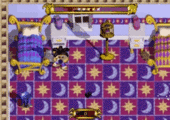

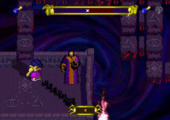
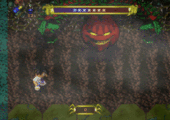
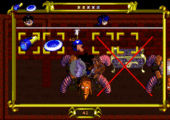
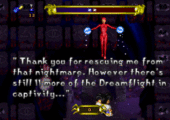
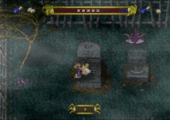
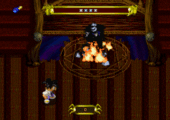
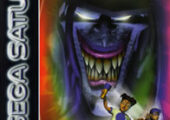
Recent Comments